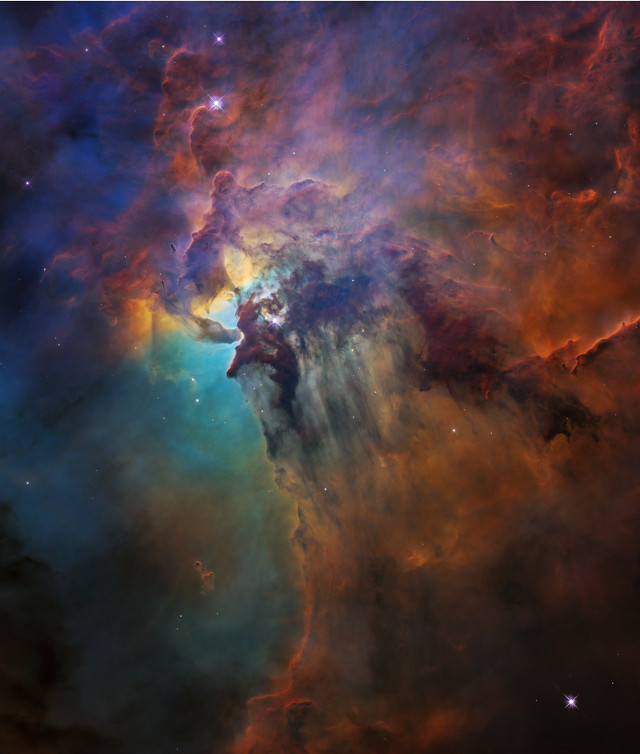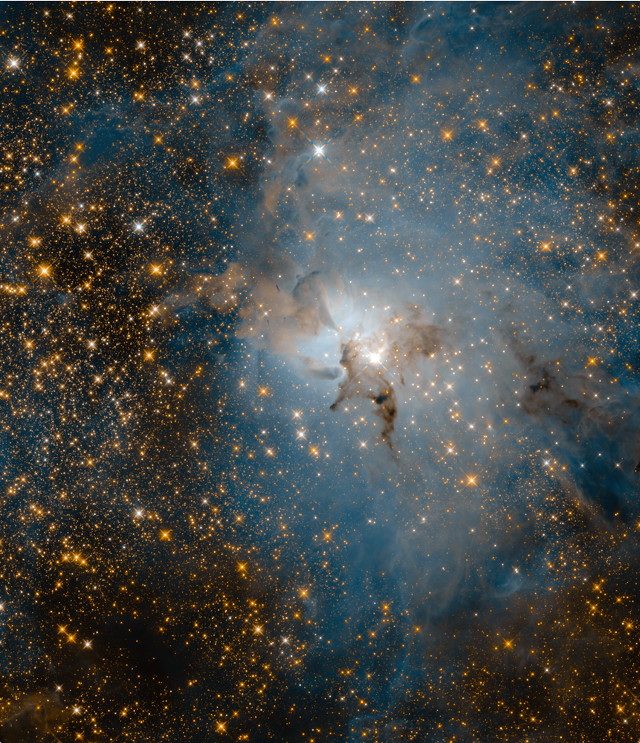
On April 24, 1990, the Hubble Space Telescope was launched on the Space Shuttle Discovery and put into orbit the next day. To celebrate the 28th anniversary of that event, which represents a milestone in the history of astronomy, new breathtaking photos of the Lagoon Nebula have been published.
About 4,000 light years away from the Earth, the Lagoon Nebula was first cataloged by the astronomer Giovanni Battista Hodierna and later included in other catalogs, so much so that it’s known by various designations including Messier 8 or M8, NGC 6523, Sharpless 25, RCW 146, and Gum 72. In optimal conditions it’s visible even to the naked eye, so it’s the object of observations by amateur astronomers as well.
The new extraordinary photos of the Lagoon Nebula were taken using the Hubble Space Telescope’s Wide Field Camera 3 instrument between February 12 and 18, 2018. It will have a relatively short life in astronomical terms because it’s an H II region, an abbreviation that indicates ionized hydrogen because it contains clouds of that gas ionized by ultraviolet radiation from young stars. Those are massive stars that quickly consume their hydrogen and therefore die after a few million years with the consequent interruption of the ionizing ultraviolet emissions.
At the center of the photos you can see the star called Herschel 36, about 32 times more massive than the Sun and with a diameter about 9 times larger. Its age is estimated to be about one million years old so in astronomical terms it’s a newborn but due to its mass it will consume its hydrogen in another 5 million years before beginning the agony that will cause it to explode into a supernova.
The whole area is a nursery where new stars are incubated in the densest regions, where gas is pushed by various phenomena that can include the stellar wind of stars already born such as Herschel 36. Its action is rather violent and its strong wind ripped open the bubble of gas that surrounds it.
The images show a region about 4 light years wide and in the top one at visible light the dust pushed away from the star shows glowing oxygen in blue while it illuminates the cavity in yellow. The glowing nitrogen appears in a reddish color while a mixture of hydrogen, oxygen and nitrogen appears in dark purple.
The visible frequencies are blocked by the dust while the infrared ones pass through it. This is the reason why in the infrared image at the bottom you can see many stars, some inside the Lagoon Nebula and others that are in the background and therefore much more distant.
The launch of the James Webb space telescope keeps on accumulating delays and is now scheduled fro 2020, so the Hubble Space Telescope will continue to be a crucial astronomical instrument for a couple of years. This doesn’t mean that it will later be abandoned because for some time the two telescopes are supposed to work together to obtain new great discoveries and new extraordinary photos.


